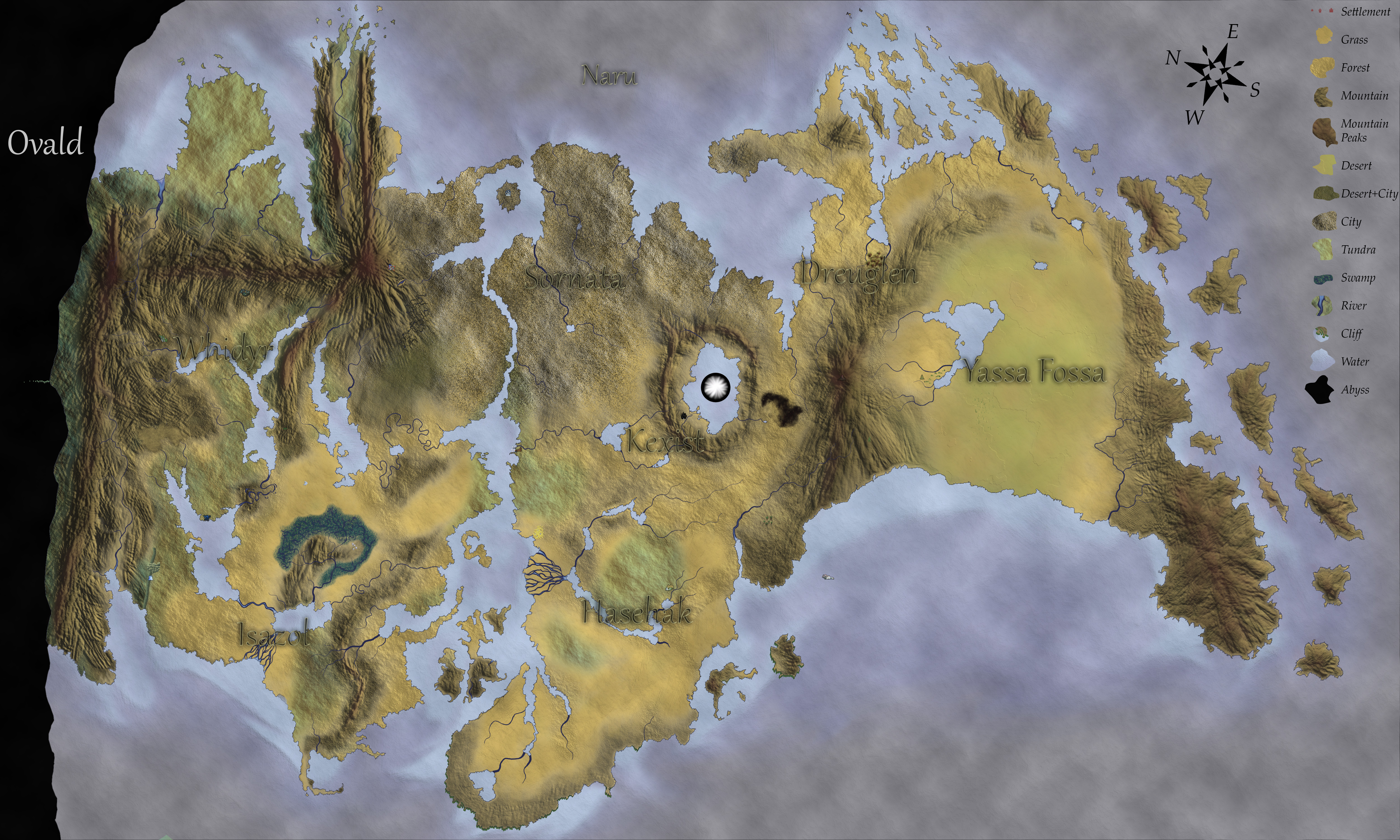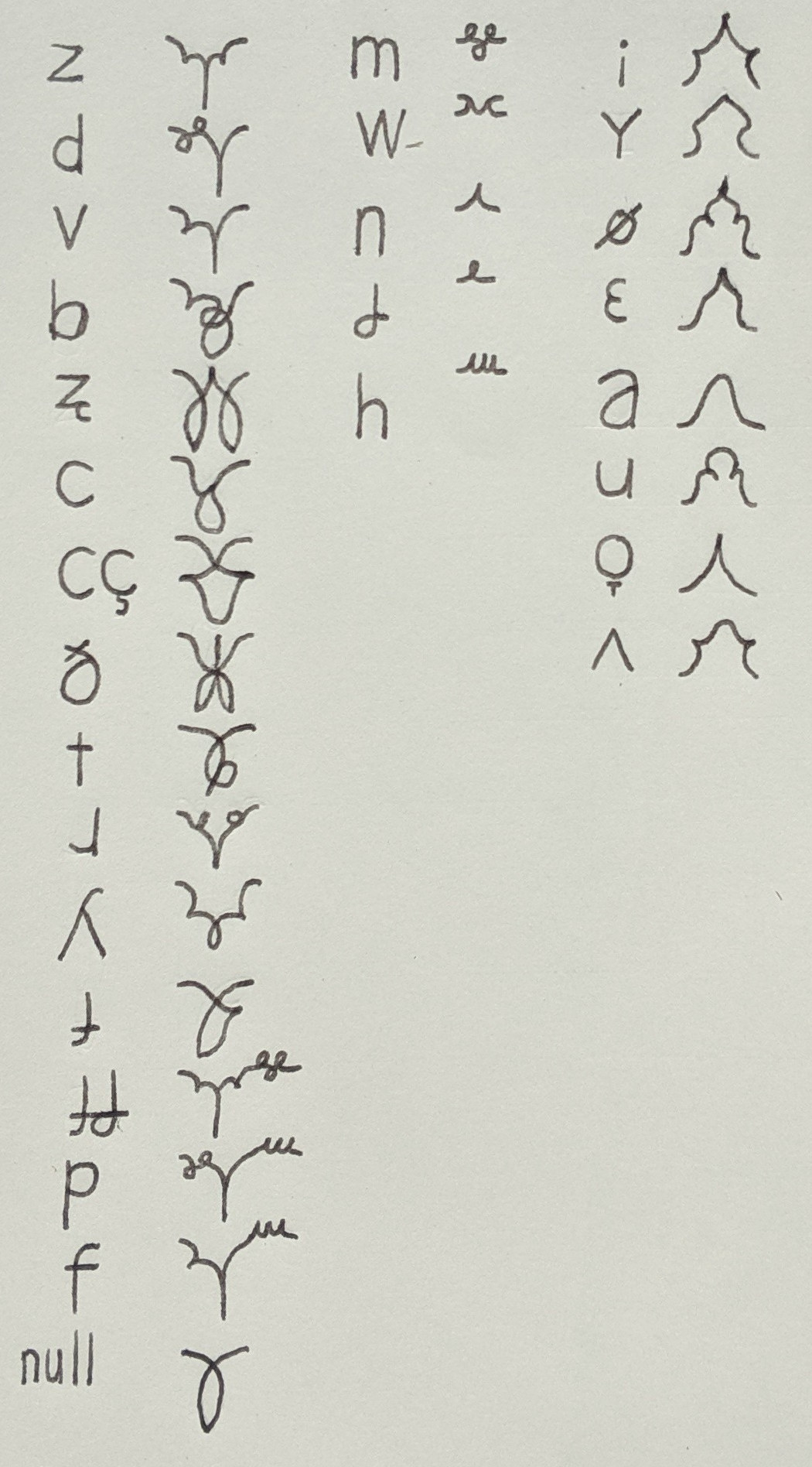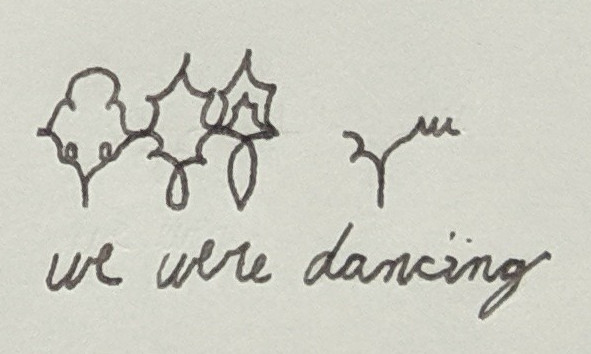Nihyo
Origin & Writing
Nihyo is a direct descendant of Humoh that had little outside influence when it evolved, unlike its sister languages of Chkoht and Thoos. Just like the language it evolved from, Nihyo was and still is primarily spoken by Humi. Nihyo evolved in nations that were majority patriarcal. This is due to humi being majority patriarchal and the humi of those times having hatred for any and all Drake, who were majority matriarcal. This transformed the gendered words from its predecessor (see “Gender” below).
Nihyo, like most other languages, is still able to be adapted and sometimes verbally spoken by other Species. And those who speak Nihyo are most commonly found in central City of Sornata, though it can be heard as far south as Sisiti.
Nihyo did not adopt the Burn Writing of western languages, but used the humi discovered stain writing. The language can be written through burning writing, though not so easily with hole burning. Burning being to merely to leave a mark on the parchment where hole burning is to burn away the lines that make the letters. When hole burning, the vowels atop the consonants must be separated so as to not have the inner vowel fall out with the hole created by the fire.
Alphabet
Phonology
Two like vowels, when paired together, are to be extended when spoken. This is not universal as some dialects prefer to affix a glottal stop between the two vowels. Two like consonants get the same treatment as vowels, extending the sound when paired.
Grammar
Morphology
Gender
Nihyo, like its predecessor, is a gendered language. It, however, is less strict with its gendered words, and lost the gendered grammatical rulings Humoh had. Gender is relatively confined to verbs and adverbs. Nouns and adjectives are generally considered to be gender neutral, even if they fall within the rulings of a specific gender.
Gender is divided into three with Water (masculine) words, Sky (feminie) words, and Land (neutral) words. Water words, words which end in consonants, tend to have “good” connotations to the words (words such as uɹɪʎ (dance)). Sky words, words which end in vowels, tend to have “evil” connotations to the words (words such as ðiʟzdi (scratch)). Land words, words which end in semi-vowels, tend to have neither good nor evil connotations to the words (words such as ɟ͡ʝaitʝ (see)).
Proximity & Tense
Proximity is a concept of how close a word is to the speaker, either by its effect or physical distance. Proximity is portrayed by a suffix of a vowel. Close is o̞; away is ɛ; farther away is ɪ. Proximity, while it may be used for verbs, is typically used for nouns.
Tense is portrayed by a suffix of a vowel. Past is a; present is ʌ; future is i.
Proximity and tense may be used in tandem to portray ideas such as o̞a (recent past), ɪa (very distant past), or o̞i (near future). When doing so, they create a diphthong of the two vowels with proximity coming first and the tense second. If a word already ends in a vowel, the proximity-tense diphthong replaces that vowel.
Vowels
Vowel endings to words are limited due to suffix usage. Any vowel, typically a and o̞, may be used after a click or a whistle if the next sound is a consonant. This is for speech only and is not reflected in writing.
Semi-Vowels
Semi-vowels are allowed after consonants to make the verb neutral without changing its meaning. Semi-vowels also can not cluster. Semivowels may not have a vowel written atop them, there must be an empty consonant attached to the semi-vowel before it to add a vowel.
Consonants
In certain dialects, consonants at the end of words are stopped short. Click is represented by “tl” or “.c” and Whistle is represented by “wi” or “/w”.
Null
The "null" consonant is only used in writing, as it has no sound. The major reason its existance is because: vowels are attached to the consonant that proceeds them, and a word is able to end in a vowel, a "null" symbol is written to attach the floating vowels too. The "null" symbol is also used in the case of a word with two or more vowels; the "null" consonant is placed before the third vowel in a string and holds the next two vowels.
Other
The language uses verbs made from nouns, such as tøʐʌb (to sun (present)), to describe the action taken with the thought of the noun in mind. This is done by adding a vowel or vowel and consonant paring to the end of the word. Having a suffix of only a vowel will make the verb feminine while a vowel then consonant will make it masculine. The vowel used is the proper tense for the verb. If there is no specific tense in mind, the present tense is used as a default.
To make a gerund, remove any vowels (non-suffix) at the end of the word and replace them with a single “m”. If the word ends in a consonant, affix the word with an “m”. This is not true for every word, but a vast majority of them.
Plurals replace the final consonant or consonant cluster with “v”. This is the case even if the word ends with one or more vowels, it changes the last consonant or consonant cluster.
Onset is not obligatory.
Syntax
Nihyo has a VSO word structure. The verb comes first due to verbs being gendered words that can be good or bad. The subject and object tend to be neutral, thus not as important and can come later. As the language evolved, it became entwined with the majority faith of Kanøu which is all about the good versus evil. And while nouns lost their genders forms, verbs kept them. The faith enforced the emphasis on good/evil (Water/Sky), so the gendered words tended to be chosen to come first. Subject comes before object as the culture around tended to value the self over the collective.
Objects are changed to gerunds when the object is defined by a definite or indefinite article. Rather than “he took a fall” it would be “he took falling”; “I spilled the drink” would be “I spilled drinking”. This does not affect subjects.
Nouns become compounds with its adposition followed by its determiner (if applicable). Examples are ɟo̞fɹpɪz (the desert), dwo̞øzic͡çɛn (with single sibling), or do̞dɹɛn (at ground). Like nouns, adjectives are also compound. Adjectives come immediately before the thing they are describing.
Genitive words are placed between the noun and its accompanying adjective. If there is no adjective, it comes directly prior to the noun.
Dictionary
Vocabulary
See Words While most forms of “to be” are implied zero copula, the past perfect is ɟa.Pronouns
Pronouns I, You, and It, are the same word but each are displaced. “I” is “close”. “You” is “away”. “It” is “farther away”. Plural pronouns, “We” and “They”, abide by the same logic. “We” is “close”, “They” is away.Nihyo Pronouns
| Close | Away | Further Away | |
|---|---|---|---|
| I(N): o̞tʝ | You(N): ɛtʝ | It(N): ɪtʝ | -ty |
| I(M): o̞t | He/You(M): ɛt | Him/It(M): ɪt | -t |
| I(F): To̞ | She/You(F): Tɛ | Her/It(F): tɪ | t- |
Sentence examples:
- We were dancing.: Uɹɪʎii o̞vʝ.
- It’s all right. See, it’s only a scratch.: Ʝo̞g ʏtʝ haɛk. ɟ͡ʝaitʝ ɛtʝ, ʏtʝ øzi ðiʎzdm.
- Where do you think you are going?: to̞wn ɛtʝ, cçim ødwɛtʝ?
- I do not think even they know.: f do̞cn atʝ, hto̞wn o̞t
Root Languages
Cases
All cases are either added as the very first or the very last.- Genitive: Click prefix
- Dative: Whistle prefix
- Instrumental: change ending to ʐ (add ʐ if vowel end)(comes before click or whistle if applicable)
- Vocative: Punctuation






Comments